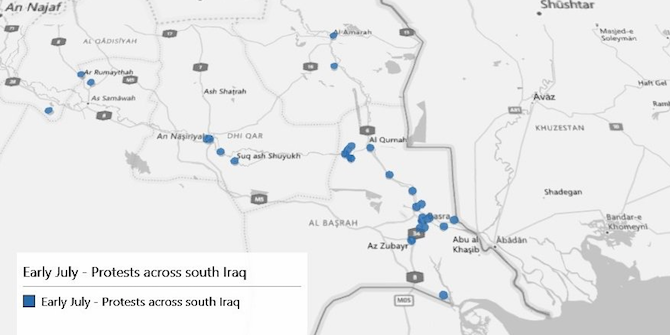by Madawi Al-Rasheed & Pejman Abdolmohammadi

On 7 May 2015, the LSE Middle East Centre organised a workshop entitled ‘Saudi Arabia and Iran: Beyond Conflict and Coexistence?’. It was a coincidence that several academics, policy makers and think tank analysts debated the roots of the rivalry between the two countries throughout the day while awaiting the expected announcement to withdraw from the Joint Comprehensive Plan of Action (JCPOA) – or the Iran Nuclear Agreement – that US President Trump made in the evening.
The workshop was timely as it brought different perspectives on the relationship between Saudi Arabia and Iran since 1979 and anticipated future scenarios in light of the latest perhaps most important and dangerous implications of the US withdrawal from the nuclear deal. This blog series brings together a collection of the papers presented at the workshop.
Persistent conflicts such as the one under consideration are always perpetuated and defended by invoking an evolving narrative to justify the persistent antagonism not only to domestic audiences but also to the international community. Saudi Arabia and Iran have not deviated from this trajectory. The conflict has often been explained as a function of an allegedly eternal Sunni–Shi’a schism that mutates into tense proxy wars, sponsored by both countries across the Middle East and beyond. In deconstructing this simple and reductionist analytical framework, authors of these papers show how certain domestic concerns play into perpetuating the enmity. While the inflammatory sectarian rhetoric that flourished around the conflict should not be undermined as a mobilising tool, nor should the salience of modern sectarian identities be ignored, more nuanced political, ideological and economic variables are brought in to explain the four decades of antagonism. The focus of the presentations was to combine an analysis of domestic concerns and geostrategic variables as an analytical framework, without losing sight of the relevance of the sectarian narrative or the current international context of the Middle East.
The workshop offered insights into the Saudi–Iranian rivalry and hopefully it promised a different understanding of the roots of the conflict that may benefit academics, policy makers and those interested in the region. As the workshop came to a close on the day of the US withdrawal from the Nuclear Agreement, a sense of pessimism was difficult to disperse. The future of the Middle East is seriously held hostage to this persistent conflict. While all Arab countries have their own internal challenges and uncertainties, the Saudi–Iranian conflict is bound to penetrate countries through the gaps in their political structures and economic vulnerabilities.
Madawi Al-Rasheed is Visiting Professor at the LSE Middle East Centre. She tweets at @MadawiDr
Pejman Abdolmohammadi is Lecturer of Political Science and Middle Eastern Studies at John Cabot University in Rome. Until recently, he was also Visiting Fellow at the LSE Middle East Centre.
In this Series:
- The Iranian Threat: The Saudi Perspective by Ali Shihabi
- Saudi Domestic Uncertainties and the Rivalry with Iran by Madawi Al-Rasheed
- Saudi Arabia and Iran: Mirrored Islamisms by John Jenkins
- Saudi Arabia, Iran and the Struggle for Supremacy in Lebanon and Bahrain by Simon Mabon
- Yemen: Background to the Manufacture of a Proxy War by Helen Lackner
- Saudi–Iranian Rivalry and the Impact on the Syrian Conflict by Julien Barnes-Dacey
- Weathering the Storm: Europe’s Iran Policy after America’s Withdrawal from the Nuclear Deal by Riccardo Alcaro
- Balancing Act: Russia between Iran and Saudi Arabia by Mark N. Katz
- Conceptual Origins of Iranian-Saudi Entanglements by Mahmood Sariolghalam






